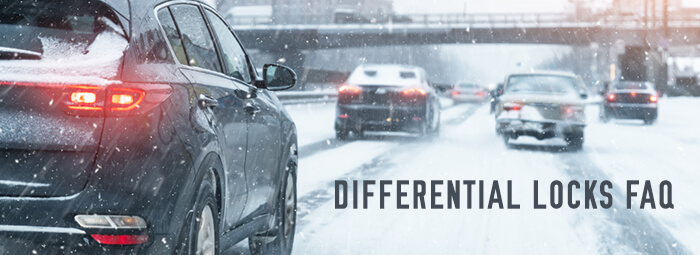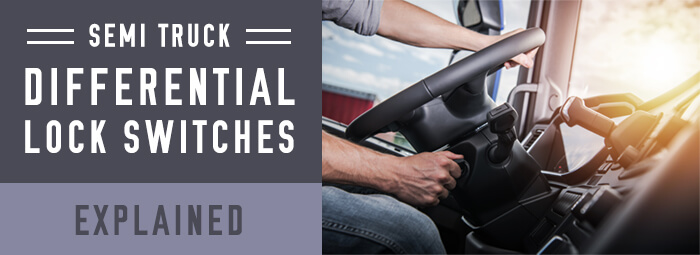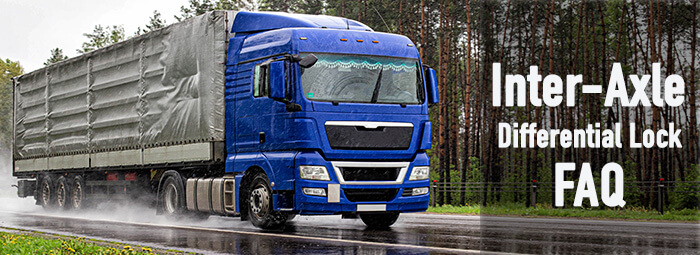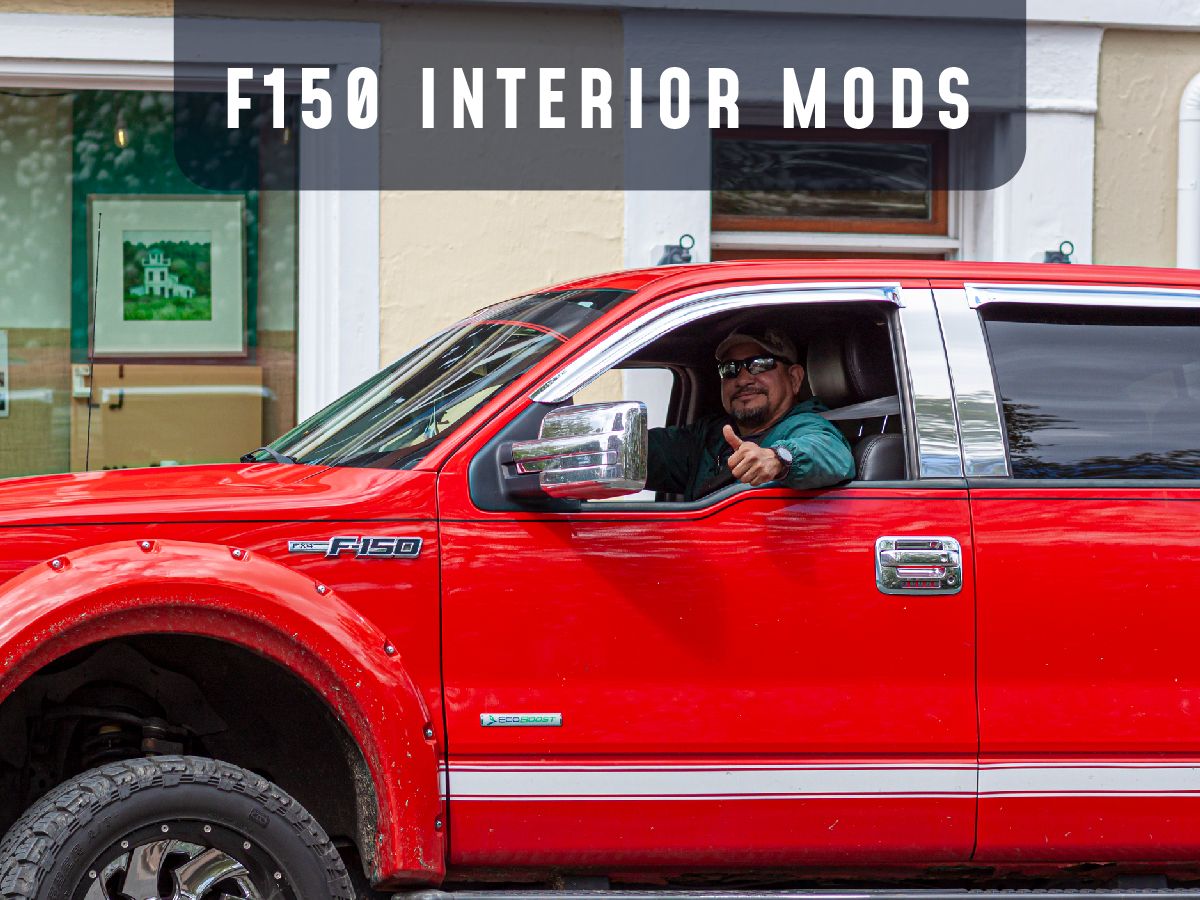Before we can get a clear understanding of how differential locks work, it is essential first to understand how open differentials work. Understanding open differentials makes it easy to explain how locked differentials work. In the open differentials set up, the wheels receive varying amounts of power depending on the traction each wheel is experiencing.
Vehicles with open differentials typically send the most power to the wheel with the least traction. This is great as it helps the car corner safely. The downside is that if the vehicle is moving on snow or mud, the wheel that loses traction will get all the power. This means that the car finds it hard to find traction and get unstuck.
29 Common Questions About Differential Locks
01. How Does A Differential Work?
A differential is a system of gears and sensors that manage how much power is sent to each set of wheels. Depending on whether they are open or locked, differentials vary in how they do this.
02. How Do Locking Differentials Work?
Locking differentials help to solve the above problem by distributing power equally to all the wheels. This is regardless of surface resistance (or lack thereof). In the scenario we explained above, the vehicle stuck in the mud will not have both wheels getting equal power. This means that the wheel that still has a grip on the surface will be able to keep the car moving.
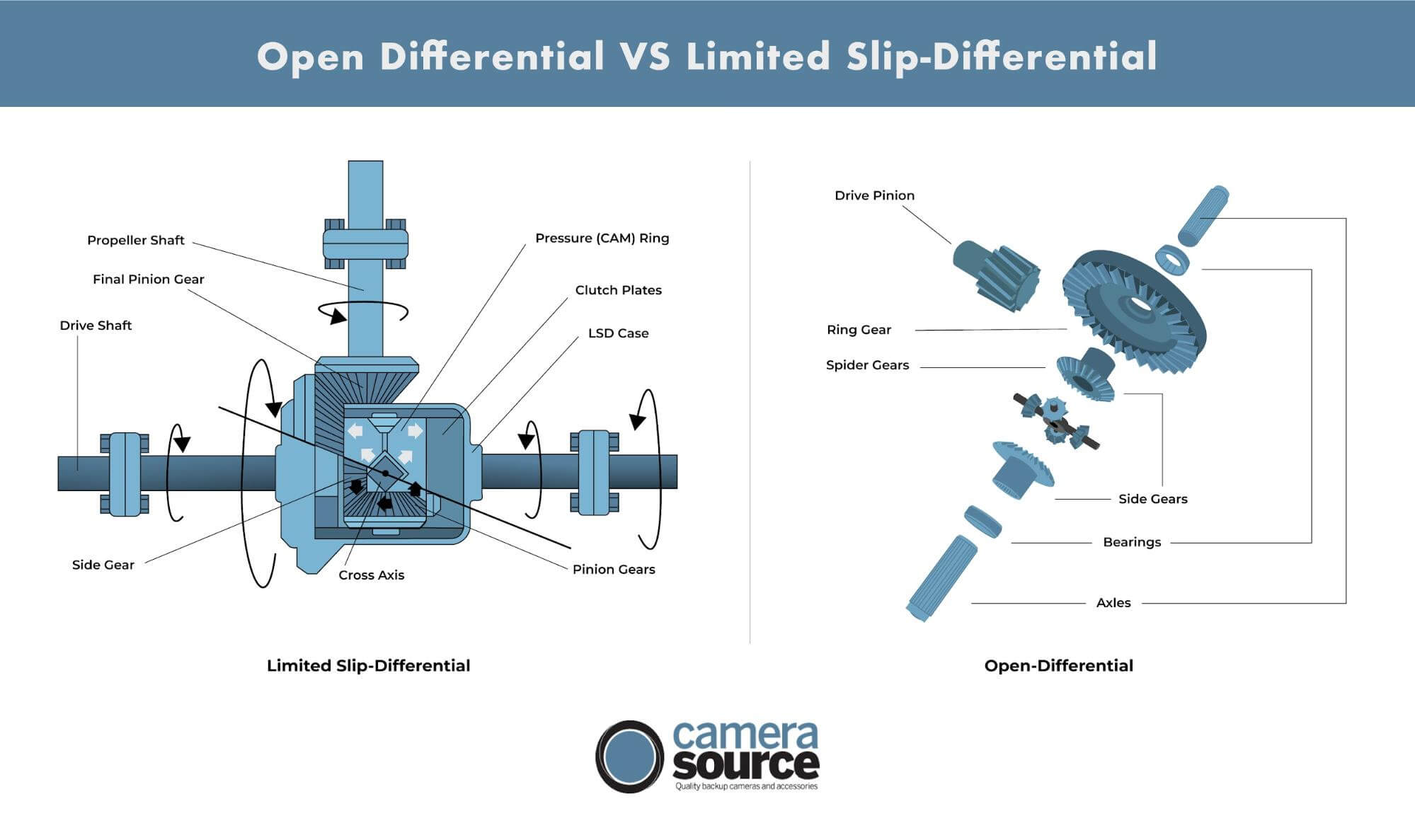
03. What Are 4 Types Of Differentials?
There are a number of differentials designed for different vehicles, below are four of the most common on commuter vehicles:
- Open Differentials - Here, power is distributed according to how much grip the wheel has on the surface. The less traction, the more power the wheel gets.
- Locked Differentials - This system locks the amount of power each wheel gets, regardless of the traction.
- Limited-Slip Differentials - Here, the differential operates as an open differential when surface conditions are good. However, when it detects loss of traction in a wheel, it immediately limits the amount of power to that wheel. This has the effect of helping the vehicle come unstuck.
- Torque-Vectoring Differentials - This type of differential uses advanced sensors to adjust power distribution to each wheel. The sensors use parameters such as the vehicle's speed, surface conditions, and so on to adjust power distribution constantly.
04. What are the Disadvantages of Differential Locks?
Each of the various differentials comes with several drawbacks. For example, open differentials make it easy for the vehicle to corner but are not so good on slippery surfaces. Torque vectoring differentials deliver the best results, but the electronic sensor system has a high chance of system failure.
05. What are the Alternatives to Differential Locks?
Mechanical Clutch LSD - This special limited-slip differential uses a system of clutches to switch from open to locked differentials.
Viscous LSD - Here, the system uses a thick fluid to create the pressure that allows the system to switch from open to locked differentials.
06. What are the Applications of Differential Locks?
Differentials help in ensuring that a vehicle corners safely while at the same time assisting in traction control. Without differentials, cars would be unable to turn corners at higher speeds due to the disparity between the turning length each wheel has to make.
07. In what Position Should My Differential Locks Be?
This depends on the kind of surface you are driving on. You can keep your differential lock open if you are on a good road. If you are about to drive on an uneven or slippery surface, you can then lock the differentials.
08. Do All 4x4 Have Differential Lock?
Not all 4x4 vehicles come with a differential lock. Some, however, may have front differential locks, while others come only with rear differential locks.
09. What Are Front And Rear Differentials?
This defines the position where the differentials are located. Front differentials are used in front-wheel drive vehicles. The opposite is true for rear-wheel-drive vehicles.
10. Do Cars Have Two Differentials?
Not all vehicles have two differentials. Only All-Wheel Drive (AWD) vehicles have both front and rear differentials.
11. What is the Most Common Type Of Differential?
The most common type of differential is the open differential. This is found in most family vehicles and cars designed for highway driving.
12. What are the Parts Of A Differential?
Differentials differ depending on their type. However, here are the main components of a differential system:
- Half-shafts, also known as axle shafts
- Sun gears or side gears
- Cross pin or pinion shaft
- Bevel pinion
- Crown wheel
- Housing
13. What Is A Standard Differential?
A standard differential refers to an open differential. This is the most common type of differential out there.
14. Can You Lock Your Differentials While Moving?
While differentials can be unlocked while driving, one should never lock differentials while driving. You should only do it when the vehicle is at a standstill or very low speeds.
15. What is the Maximum Speed With Differentials Locked?
You should always keep your differentials unlocked when driving on a good surface. When differentials are locked, Do not exceed 25mph with your differentials locked.
16. Can You Use Differential Locks On Sand?
While differential locks can help you gain traction on sand, they mostly have the effect of digging the car deeper into the sand. Adjusting tire pressure is the best way to get across a sandy surface.
17. How to Install A Differential Locker
While it is relatively easy to install a differential locker, one must be mechanically competent enough to remove the vehicle's axle. If you are unsure which differential would work best, refer to the vehicle manual for help.
18. Is My Differential Locker Working?
Most vehicles with differential lockers have a warning light if there is a problem with traction control. How the car handles a turn can give you a pretty good idea of how well the differential lock works.
19. How A Rear Locking Differential Works
These are differentials connected to the rear wheels and control power distribution to each wheel. The differential will split power between the two rear wheels in the case of a locked rear differential system.
20. Limited-Slip Differential Vs. Locked Differential
A vehicle with a limited-slip differential can make the best of both worlds. The system keeps the differentials open on smooth surfaces and limits power to any wheel that loses traction.
21. E-Locker Vs. Air Locker
This refers to the mechanism that differential locking systems use. E-lockers utilize electronic switches to lock or unlock the system. While e-lockers are much more reliable, they take time to engage relative to air lockers. The choice between the two depends on a trade-off between reliability and ease of engagement.
22. What is theCost Of Installing A Differential Locker?
This varies depending on the type of differential locker being installed. The price can range between $800 and $1,000.
23. Are there Differential Lockers on IFS Vehicles?
IFS stands for Independent Front Suspension. These are vehicles with independent suspension on the front wheels. Differential locks can be installed on cars with IFS.
24. How To Test Rear Axle?
The best way to do this is through a visual test. Jack up your vehicle and inspect the rear axle. If you notice dents, cracks, or evidence of a leak, you should get a mechanic to check it further.
25. What is the Difference Between Differential Lock and 4X4?
4x4 vehicles split power equally between the front and rear axle. While this is great for traction control, the system does not manage the power flow between the wheels on the same axle. You need to install a differential lock to enable your 4x4 to do this.
26. What Causes Differential Lock Warning Lights?
There are many reasons why a differential lock warning light may flash. It may indicate that the differential lock has been engaged in high gear. In other models, the differential light blinks if something is wrong with the system.
27. Can You Fit Differential Lockers in Your 4x4?
The answer to this is yes. Most 4x4 vehicles can be fitted with aftermarket differential locks. Whether you should or not depends on how you use your vehicle. If you are constantly driving on rough terrain or slippery surfaces, a differential locker can significantly improve your driving experience.
28. Which Cars have Standard Differential Lockers?
Several vehicles feature differential locks as standard. These include the Jeep Wrangler, Ford- F150, Toyota Tacoma, Chevy Colorado, and GMC Sierra, among many others.
29. When To Use Differential Locks?
You should only engage your differential locker when driving on a slippery surface or rocky terrain.
Enhance Safety, Confidence, & Comfort With A Backup Camera From Camera Source
Differential locks perform an important function that enhances the safety of the vehicle on slippery and uneven surfaces. Backup cameras enhance your vehicle’s safety when reversing. Backing up large trucks and SUVs can be difficult due to limited visibility and maneuverability. A backup camera solves this problem by giving you complete visibility of the area behind your car. Get in touch with Camera Source to learn more.

